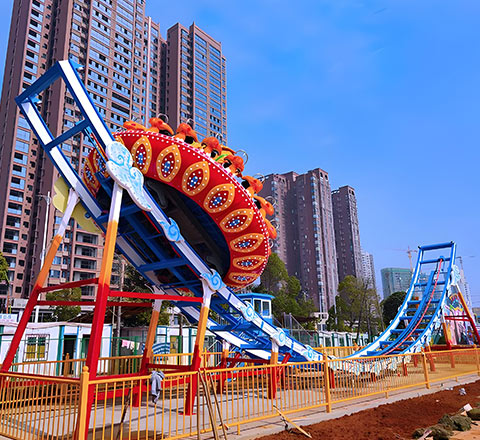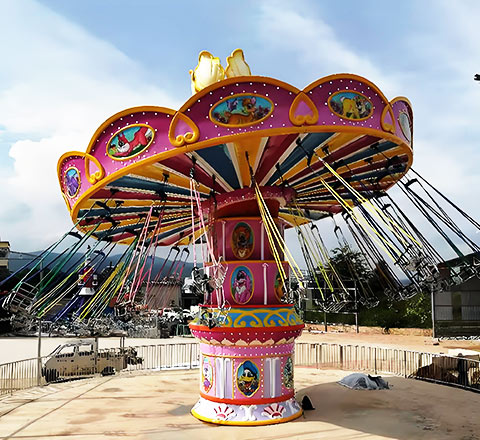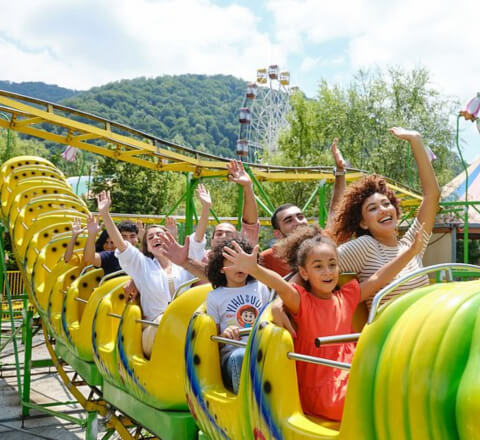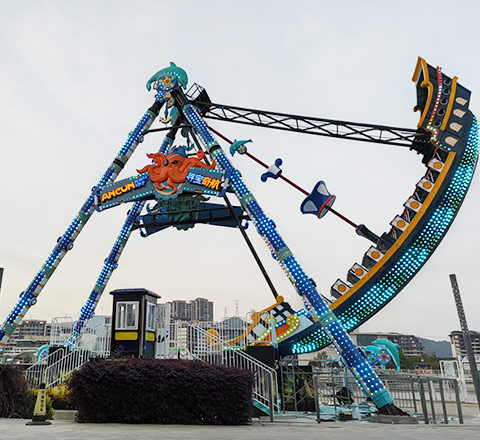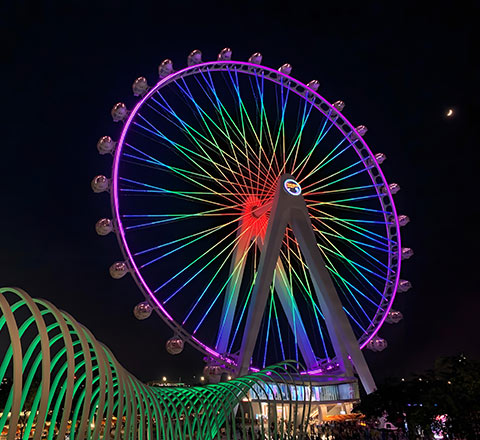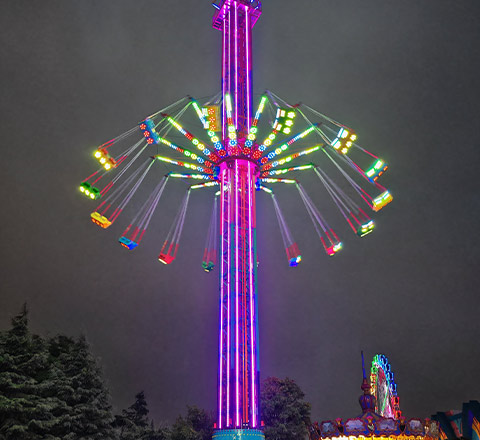Introduction: Why Theme Park Design Matters
Ever wondered how the world’s best theme parks are born?
It’s not just about wild rides or flashy entrances—it’s about telling a story, creating unforgettable memories, and making sure every guest wants to come back.
In this step-by-step guide, you’ll discover:
- The secrets behind amazing amusement park layouts
- How to build an engaging map, choose the best rides, and create an immersive guest experience
- Pro tips, common mistakes, and future trends from industry insiders
Chapter 1: Finding Your Big Idea (Theme & Story)
Everything starts with a story.
A park without a clear theme is just a collection of rides.
Do you want visitors to feel like adventurers, wizards, astronauts, or explorers?
Ask yourself:
- What’s the central theme or story?
- Who’s your target audience—kids, teens, families, thrill-seekers?
- What mood, emotion, or journey should guests experience?
Pro tip:
Start with an “Experience Matrix”—a simple chart mapping your audience, main attractions, and the emotions each area should evoke.
Sample Table: Experience Matrix
| Zone Name | Target Audience | Main Attraction | Emotions |
| Fantasy Forest | Families/Kids | Fairy Carousel | Wonder, Joy |
| Adventure Cove | Teens/Adults | Extreme Coaster | Excitement |
| Water World | All Ages | Splash Battle Ride | Fun, Refresh |
Theme Park Related Templates
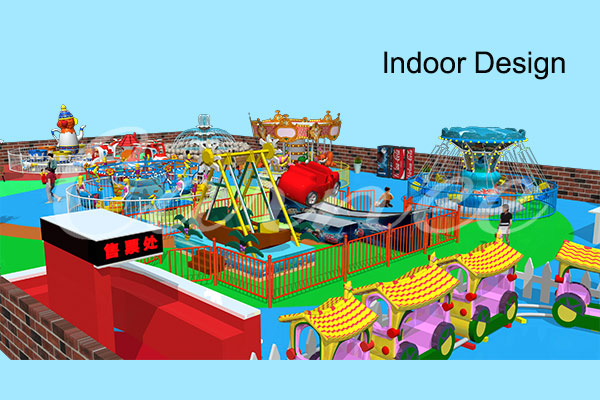

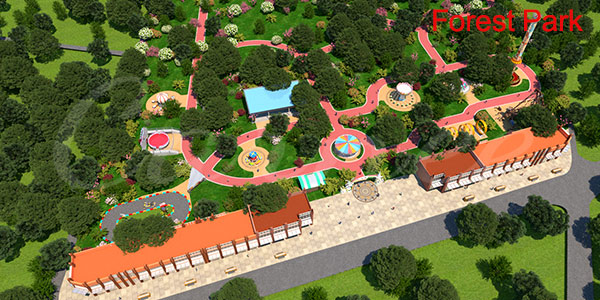
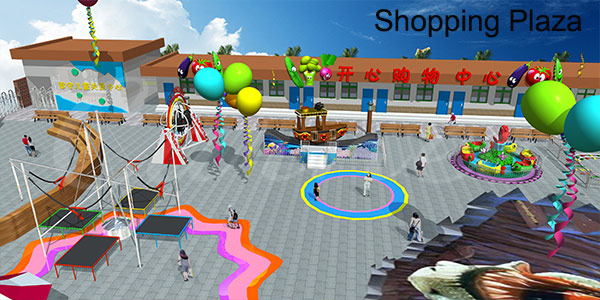
Chapter 2: Master Planning – Building Your Amusement Park Map
Now the real work begins.
Every legendary park starts with a bird’s-eye master plan—your ultimate amusement park layout blueprint.
Key Elements for Your Park Map:
- Main Entrance (first impressions count!)
- Themed Zones
- Central Plaza (navigation hub)
- Major Attractions
- Secondary Rides & Play Areas
- Food Courts & Restaurants
- Green Spaces, Lakes, Gardens
- Restrooms, Guest Services
- Emergency/Staff-only Areas
- Clear Wayfinding (signs, paths, map boards)
Sample Layout Table:
| Area | Function | Example Element |
| Entrance | Welcome/Access | Themed Gate, Map Kiosk |
| Central Plaza | Navigation Hub | Fountain, Seating |
| Themed Zone 1 | Attractions | Coaster, Arcade |
| Food/Rest | Dining/Break | Restaurant, Benches |
| Utilities | Ops/Safety | First Aid, Storage |

Want inspiration? Check Amusement Park Project Solutions for real-world examples.
Chapter 3: Choosing the Right Amusement Rides
Pick the right amusement rides that fit your story and guest profiles
Types of Amusement Park Rides Table
| Type | Examples | Audience |
| Thrill Rides | Roller Coaster, Tower Rides | Teens/Adults |
| Family Rides | Ferris Wheel, Train Ride | All Ages |
| Water Rides | Log Flume, Rapids | Families |
| Interactive | 4D Dark Ride, Shooting Gallery | All Ages |
| Live Shows | Parades, Musicals | All Guests |
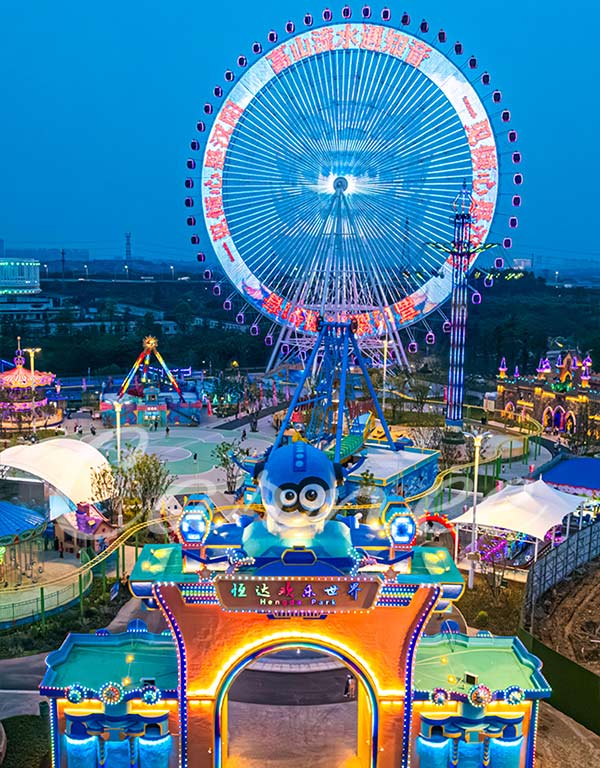
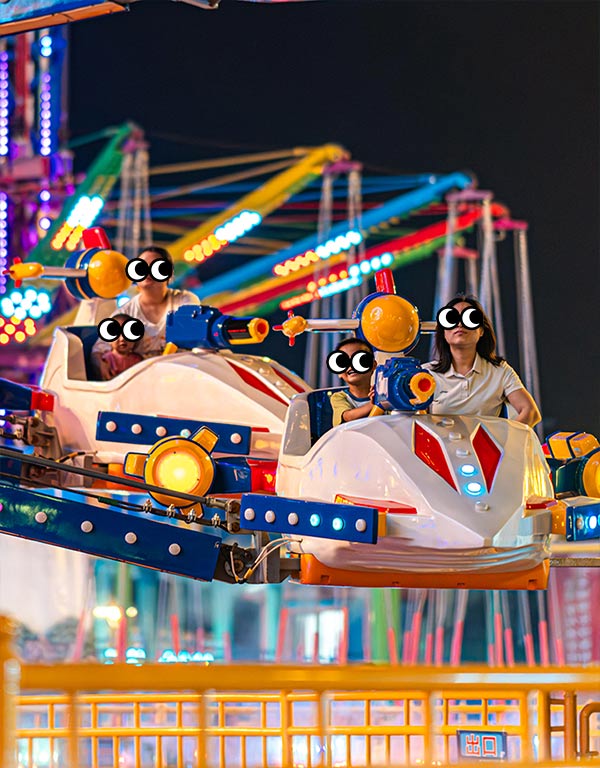
Dive deeper: How to Buy Amusement Park Rides: The Complete Guide for Park Owners
Chapter 4: Designing for Flow, Safety, and Accessibility
A great layout is more than just eye candy. It’s about flow and function.
- Smooth guest flow: Minimise bottlenecks, avoid dead ends, provide plenty of signs and maps
- Safety first: Design for clear sightlines, emergency exits, and separation of guest/staff areas
- Accessibility: Wide paths, ramps, inclusive ride access, quiet zones, accessible bathrooms
Chapter 5: Immersive Environments – Details Make the Difference
From soundtracks to scent machines, it’s the little things that turn a park into an adventure.
- Background music for each zone
- Staff in themed costumes
- Architectural facades (castles, spaceports, jungles…)
- Special effects (mist, projection, light shows)
Chapter 6: From Drawing Board to Reality – Construction and Maintenance
- Design development: Turn sketches into blueprints with architects/engineers
- Construction phase: Build, test, and install all rides/structures
- Maintenance: Daily inspections, scheduled upgrades, and cleanliness
- Marketing & Launch: Teaser campaigns, grand opening events, social media buzz
Timeline Infographic Suggestion:
Visual timeline of park creation: Idea > Planning > Design > Build > Test > Open
Chapter 7: Tech Trends & Future of Park Design
- Digital park maps & apps
- AI-powered guest management & queue reduction
- Augmented Reality for interactive experiences
- Sustainable/Eco-friendly park design
- Modular attractions for seasonal change
See also: Your Guide to Theme Park Design (Part I Planning An Amusement Park Layout)
Chapter 8: Resources – Who Designs Theme Parks?
Professional firms for park master planning:
- Storyland Studios
- Falcon’s Creative Group
- Jora Vision
- Scruffy Dog Creative Group
Want to learn more? Check: Your Guide to Theme Park Design
Professional Table: The Amusement Park Design Process
| Phase | Main Activities |
| Feasibility Study | Market research, financial analysis, site selection |
| Concept Development | Theme/story design, experience matrix, key attraction ideas |
| Master Planning | Market research, financial analysis, and site selection |
| Schematic Design | Attraction blueprints, landscape, buildings |
| Design Development | Park layout, zoning, infrastructure, and guest flow |
| Construction Docs | Detailed technical drawings and specs |
| Construction/Build | Final plans, material selection, and integration of systems |
| Testing & Commissioning | Ride and system safety checks, staff training |
| Grand Opening | Groundwork, building, and ride installation |
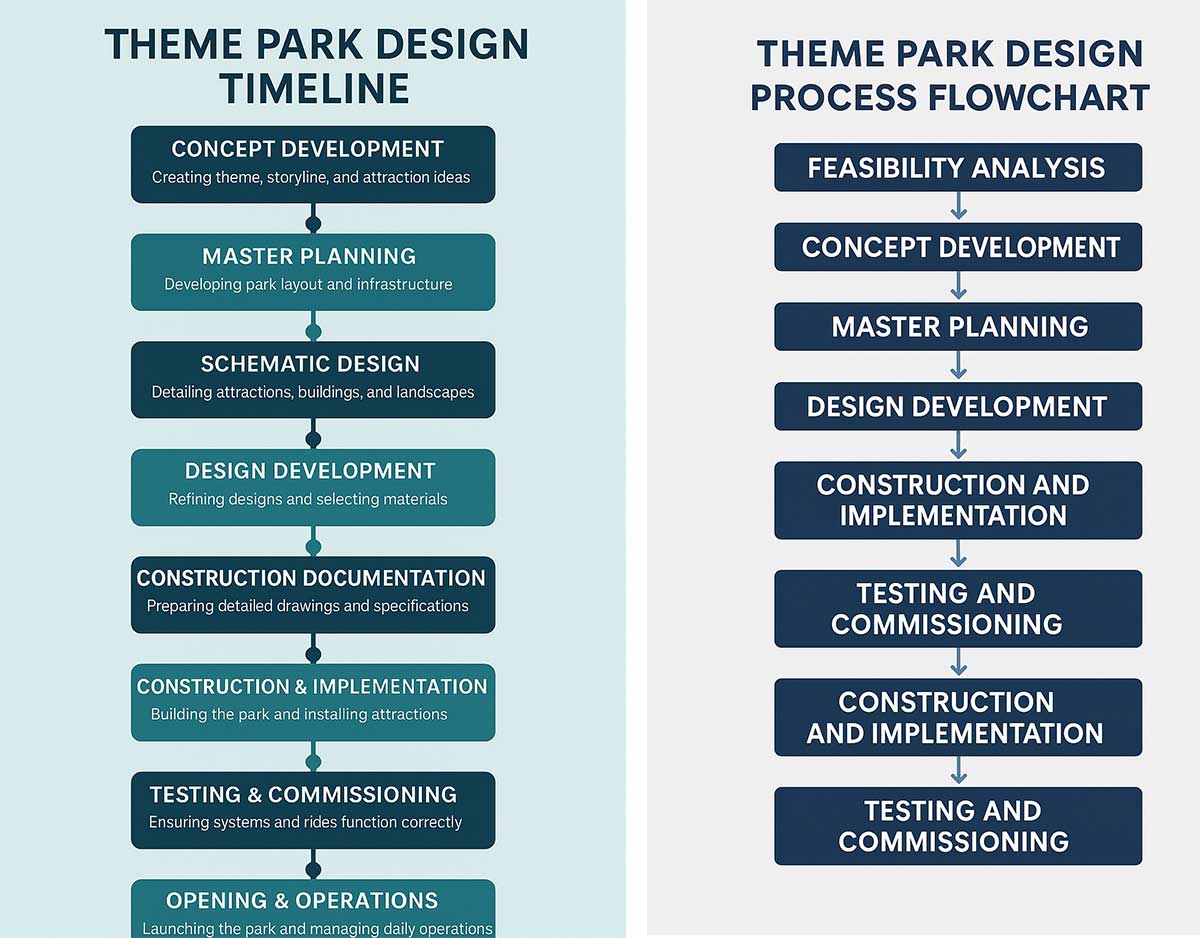
Expert FAQ: Theme Park Design, Planning & Careers
1. What are the main steps in designing a theme park?
See the professional table above! From feasibility to concept, planning, construction, and opening—every step counts for success.
2. Which software/tools do designers use?
- CAD (AutoCAD, SolidWorks)
- 3D Modeling (SketchUp, Blender)
- Storyboarding & Photoshop
- Park design simulators (Planet Coaster, Icograms Designer)
3. How long does it take to build a theme park?
From concept to grand opening, typically 2–5 years (or more for mega-parks).
4. How big should a theme park be?
Small parks: 10–20 acres
Major parks (like Disneyland): 100+ acres
5. What education is needed for theme park design?
- Architecture
- Engineering (civil, mechanical, electrical)
- Industrial design
- Themed entertainment design (SCAD, UCF, etc.)
6. What are the newest trends in park design?
- AR/VR interactive experiences
- Eco-friendly park layouts
- Personalised AI-driven guest services
7. How do you find the right park design firm?
Look for portfolios, client reviews, and international experience (see resources above).
8. Can I use online tools to create my own park map?
Yes! Try Icograms Designer for educational digital layouts, or Planet Coaster for 3D park design fun.
9. What are common design challenges?
- Adapting to local climate/culture
- Compliance with regulations
- Managing budget, timeline, and guest flow
10. What are some best practices for guest experience?
- Immersive theming
- Clear, logical layout
- Great food/rest spaces
- Regular maintenance and staff training
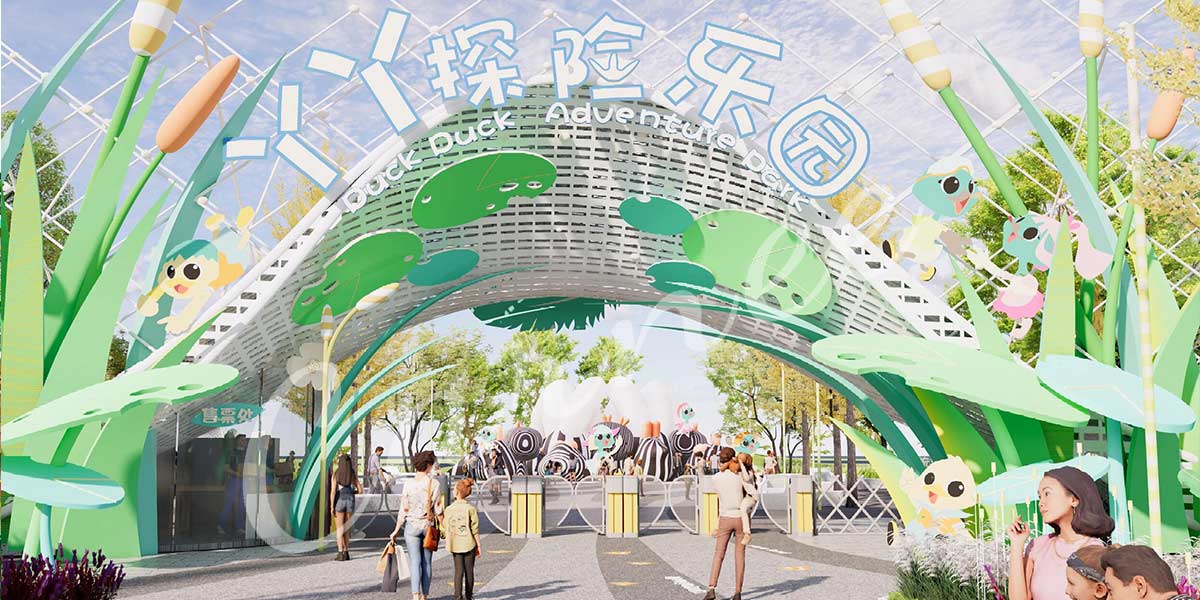
Final Thoughts: Your Theme Park Design Journey
Designing a theme park is like directing a blockbuster movie.
It’s about emotion, adventure, and memory-making—every detail matters.
A well-designed theme park layout tells a story, excites every sense, and keeps guests coming back.
If you’re ready to turn dreams into reality, start sketching, planning, and building today!
Need inspiration or help?
Check Amusement Park Project Solutions for pro tips, master planning services, and more resources.

